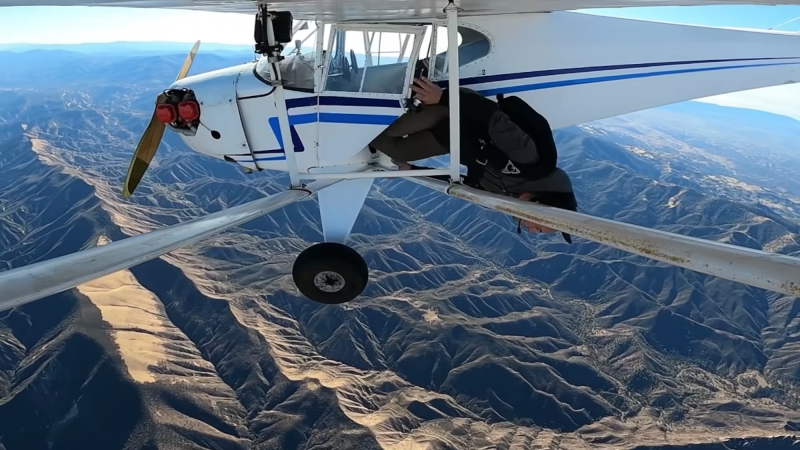

This article was originally featured on Hakai Magazine, an online publication about science and society in coastal ecosystems. Read more stories like this at hakaimagazine.com.
Few social networking platforms are known for inspiring positive social change these days, but an Inuit-developed app is helping Indigenous communities from Alaska to Greenland advance their self-determination. Named SIKU after the Inuktitut word for “sea ice,” the app allows communities in the North to pull together traditional knowledge and scientific data to track changes in the environment, keep tabs on local wild foods, and make decisions about how to manage wildlife—all while controlling how the information is shared.
A group of Inuit elders and hunters from Sanikiluaq, Nunavut, came up with the idea for SIKU more than a decade ago to document and understand the changing sea ice they were witnessing in southeastern Hudson Bay. The group turned to the local nonprofit Arctic Eider Society to develop a web-based platform where hunters in nearby coastal communities could upload photos and videos and share knowledge. Contributors began using the portal in 2015 to log water temperature and salinity data, note observations of important wildlife species—such as beluga and common eider ducks—and track the flow of contaminants through the food web.
Over the years, SIKU has evolved, and recently, the elders saw that the platform could help address a familiar challenge: sharing knowledge with younger people who often have their noses in their phones. In 2019, SIKU relaunched as a full-fledged social network—a platform where members can post photos and notes about wildlife sightings, hunts, sea ice conditions, and more. The app operates in multiple languages, such as Inuktitut, Cree, Innu, and Greenlandic, and includes maps with traditional place names. Since early 2024, over 25,000 people from at least 120 communities have made more than 75,000 posts on SIKU.
Members’ photos demonstrate the breadth and bounty of northern foods: They show plump bags of berries sitting on the tundra, clusters of sea urchins nestled on smooth gray stones, and boxes of fresh Arctic char placed in the snow. They depict harp seals, ringed seals, ptarmigan, beluga, common eider, and neat rows of colorful eggs laid out next to smiling kids. The posts tell stories of hunting and traveling, the impacts of climate change and industrial activity, and the migrations, diets, and illnesses of local animals. In effect, SIKU captures everyday Indigenous life in a rapidly changing landscape.
Traditionally, Inuit communities shared this information orally. “We have lived in the environment for centuries. We know about the wildlife,” says Lucassie Arragutainaq, a manager at the Sanikiluaq Hunters and Trappers Association and cofounder of the Arctic Eider Society. Yet industry representatives and government scientists have a long history of dismissing Indigenous knowledge and making decisions based on sparse environmental data collected during irregular, short-term studies. Now armed with SIKU, northerners are documenting information “in a way that [other] people will understand,” Arragutainaq says.
The app is also equipped with useful tools for life on the ice, including weather reports, sea ice forecasts, and other critical safety information. Hunters and harvesters can use their phones’ GPS to track their routes and geolocate each post and photo. “When I go out on the land with family, we go a long distance, and the SIKU app can show which area we are in. It’s precise,” says Karen Nanook, who lives in Taloyoak, Nunavut.
In June 2023, for instance, Nanook was heading home across the frozen ocean after an ice fishing trip when a rift appeared to open in the ice beneath one of her sled’s runners. “I thought the sled was going to fall in,” she says. But clear ice was covering the crack, and the sled stayed upright. After her close call, Nanook snapped a photo, tagged it as a “dangerous ice observation,” and posted it to SIKU to warn others.
The data held in SIKU is robust and up to date, and communities are already using the app to inform important decisions. In 2021, for example, elders in Sanikiluaq were worried the local reindeer population had thinned, so the Hunters and Trappers Association used SIKU to survey hunters and look at recent reported harvest rates. The analysis led the association to temporarily close the hunt to relieve pressure on the population and to reintroduce hunting slowly once the number of reindeer increased. This decision shows how Inuit can use the technology in combination with traditional wildlife management, says Arragutainaq. Today, the community is also using SIKU data to guide the development of the Qikiqtait Protected Area around the Belcher Islands, where Sanikiluaq is located.
SIKU has become the main tool for other research projects, too. “Having the people who are already the eyes and ears of the land use the platform to share that information will revolutionize the way we make decisions,” says Stephanie Varty, a wildlife management biologist at the Eeyou Marine Region Wildlife Board in the traditional territory of the Crees of Eeyou Istchee, in James Bay, Quebec.
Varty says trappers and land users from Eeyou Istchee’s five coastal communities—Waskaganish, Eastmain, Wemindji, Chisasibi, and Whapmagoostui—will soon use SIKU to document climate change in their region. They’ll also log observations and hunting stories, which will help the communities assess the environmental impacts of future development projects, including a proposed deep-sea port that would allow mining companies to access lithium and other minerals in the region.
Northern Indigenous communities are showing southerners that traditional knowledge should be taken seriously. “When Inuit knowledge is mobilized into graphs and diagrams, that [information] can’t be ignored and written off as anecdotal stories,” says Joel Heath, the executive director and cofounder of the Arctic Eider Society.
The ingenuity of SIKU is how it weaves together all kinds of insights about life in the North and supports community-driven research. “It’s part science and part Inuit knowledge,” says Arragutainaq. “It can work both ways, instead of one dominating the other.”
This article first appeared in Hakai Magazine and is republished here with permission.























